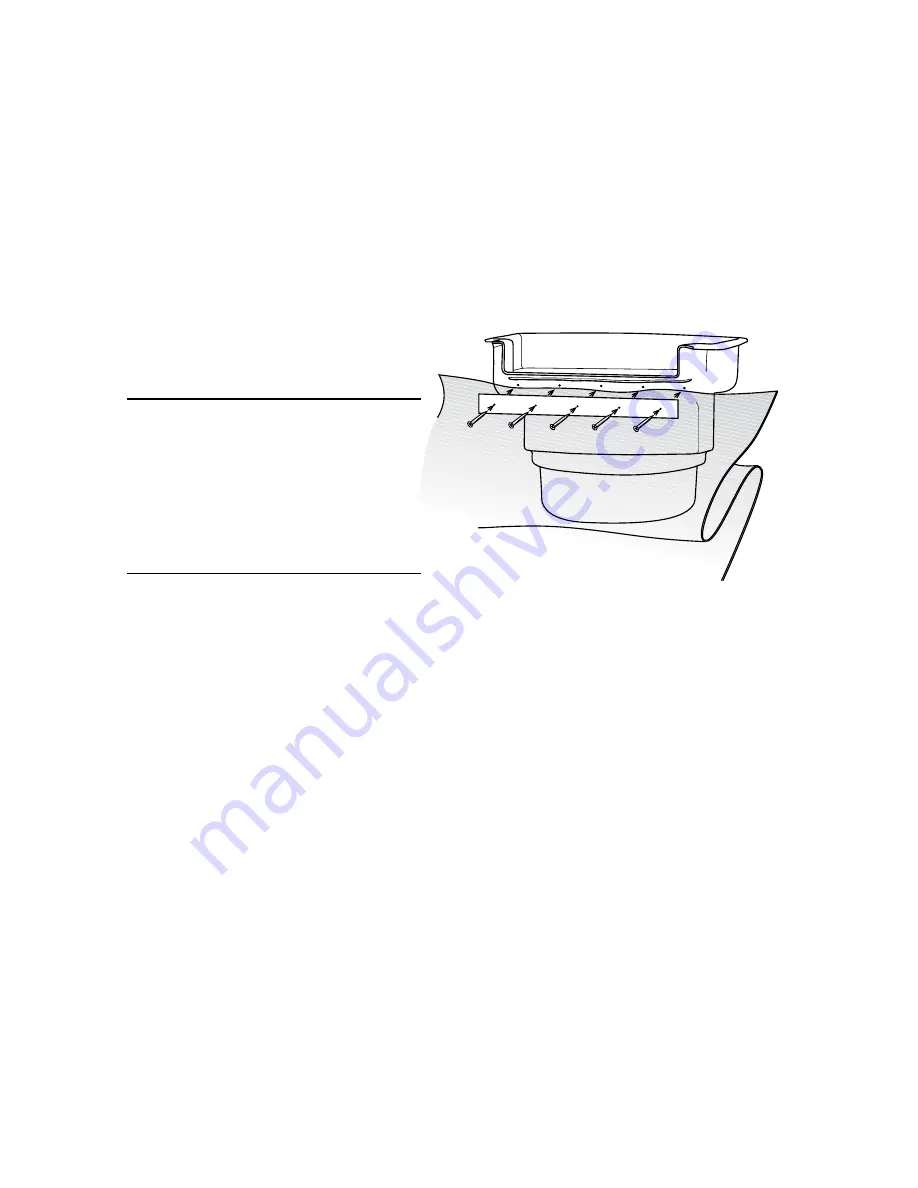
8
POND-FREE
Pond–free features exchange the open water of the pond for a gravel-topped excavation,
maximizing visual impact while minimizing headaches and maintenance. Typically, a pump placed
in a protective vault inside a lined reservoir continuously recirculates water over a stream or
waterfall. A bed of gravel hides the basin, vault and plumbing from view, leaving only the stream
and waterfall visible.
LINER ATTACHMENT
(MODELS: BF1000, 1250, 1500)
Dry fit the liner. Hold the liner up against the flat panel of the FilterFalls enclosure underneath
the spillway. Leave some excess slack in the liner below the spillway opening. This will help
alleviate any future strain on the liner connection. Make sure that the front surface of the
FilterFalls, and the back side of the liner are clean and free of debris. Once you are satisfied
with the position of the liner, lower it down and prepare to apply the silicone sealant.
Apply fish-safe silicone sealant in a consistent bead across the face of the FilterFalls,
approximately 2” below the spillway. Once completed, return the liner to its dry-fit position
and hold it in place with the provided spring clips.
Place the supplied flange under the spillway, against the face of the enclosure, on top of the
liner. The holes of the flange should be approximately 2” below the spillway so they line up
with the silicone bead. Using the stainless steel self piercing screws, attach the liner
flange to the filter. Be sure to seal the back
of each screw with a dab of silicone on
the inside of the enclosure (Figure 9).
ECHO CHAMBER VS. GRAVEL BASIN FOR A WATERFALL OR STREAM
Gravel basins consist of 70% rock and only 30% water. Echo Chamber basins are filled with
100% of water. As a rule of thumb, your pond-free basin should hold three times the amount
of water as the waterfalls and streambeds above it. It is critical to calculate the water volume
that the basin can hold before you begin construction of the waterfalls or streambed.
WHY SHOULD THE BASIN BE THREE TIMES THE SIZE OF THE STREAM?
Upon start-up, the pump sends water from the bottom reservoir to the top of the waterfall
and/or streambed. The water must then fill, from top to bottom, the waterfalls and streambed
until it eventually re-enters the basin and the water levels equalize. During this filling process,
the water level of the bottom reservoir is continually dropping.
If the streambed is built improperly, or is built too big, the water level of the bottom
reservoir may drop below the top of the pump before the water levels equalize. This would
result in the top of the pump being exposed to air. Pumps must be completely submersed in
water or they can overheat causing damage to the pump. Refer to the streambed construction
section on page 4 for more detail.
Figure 9.
Be extremely cautious when tightening the
screws. You can use a cordless drill to start the
screws; however, it is strongly recommended
that you finish tightening them with a hand
held screwdriver. Over tightening the screws
could strip out the enclosure or crack the liner
flange. The screws need only to be snug for
the silicone to make a seal.






























